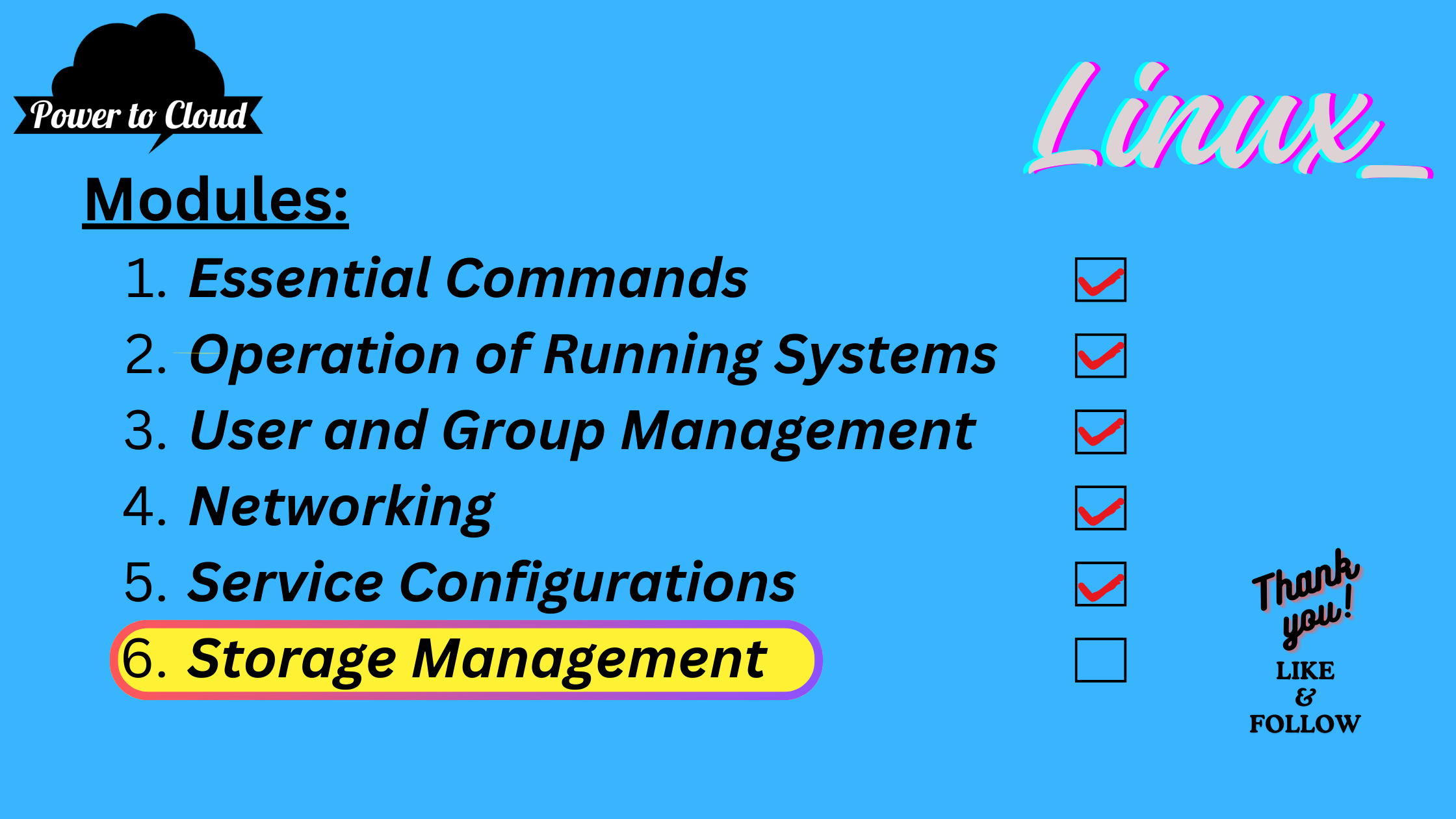6.11 Creating and Managing RAID Devices with mdadm on Linux
 Vijay Kumar Singh
Vijay Kumar Singh
Introduction:
In the realm of data storage, redundancy and performance are key considerations for ensuring data integrity and availability. Redundant Array of Independent Disks (RAID) configurations provide a solution by distributing data across multiple disks, offering fault tolerance and improved performance. In this comprehensive guide, we will delve into the various RAID levels and demonstrate how to create and manage RAID devices using the mdadm utility on Linux.
Understanding RAID
What is RAID?
RAID, or Redundant Array of Independent Disks, is a technology that combines multiple physical disk drives into a single logical unit. RAID configurations offer various levels of redundancy and performance, allowing users to tailor their storage setup to specific requirements.
Why Use RAID?
Data Redundancy: RAID configurations provide redundancy, ensuring that data remains accessible even if one or more disk drives fail.
Improved Performance: Certain RAID levels, such as RAID 0 and RAID 10, offer improved read/write performance by striping data across multiple drives.
Data Integrity: RAID configurations employ techniques such as mirroring and parity to safeguard data against disk failures and data corruption.
RAID Levels Overview
RAID 0 (Striping)
Description: RAID 0 distributes data evenly across multiple disks (striping) to improve performance.
Redundancy: No redundancy. Data loss occurs if any drive in the array fails.
Performance: Enhanced read/write performance.
Use Case: Ideal for applications requiring high performance but not concerned about data redundancy.
RAID 1 (Mirroring)
Description: RAID 1 duplicates data across multiple disks (mirroring) to provide redundancy.
Redundancy: Excellent redundancy. Data remains accessible even if one drive fails.
Performance: Moderate read performance; write performance is similar to that of a single drive.
Use Case: Suitable for critical data storage where redundancy is paramount.
RAID 4 (Dedicated Parity)
Description: RAID 4 uses dedicated parity disks to provide redundancy and data protection.
Redundancy: Good redundancy. Can withstand a single drive failure.
Performance: Read performance is comparable to RAID 0, while write performance may suffer due to parity calculations.
Use Case: Suited for applications with predominantly read operations and moderate write activity.
RAID 5 (Distributed Parity)
Description: Similar to RAID 4, but parity data is distributed across all drives in the array.
Redundancy: Good redundancy. Can tolerate the failure of a single drive.
Performance: Balanced read/write performance, with parity striping improving write performance.
Use Case: Commonly used for file and database servers where a balance of performance and redundancy is required.
RAID 6 (Double Parity)
Description: RAID 6 provides enhanced redundancy by using double parity to protect against two simultaneous drive failures.
Redundancy: Excellent redundancy. Can withstand the failure of two drives simultaneously.
Performance: Similar to RAID 5 but with additional overhead for dual parity calculations.
Use Case: Critical applications requiring high levels of data protection and fault tolerance.
RAID 10 (Mirrored-Striping)
Description: RAID 10 combines mirroring and striping to offer both redundancy and performance.
Redundancy: Excellent redundancy. Can survive the failure of multiple drives in each mirrored pair.
Performance: Excellent read/write performance, especially for random I/O workloads.
Use Case: Ideal for high-performance databases, virtualization, and mission-critical applications.
Linear RAID
Description: Linear RAID concatenates multiple drives to create a single logical volume.
Redundancy: No redundancy. Failure of any drive results in data loss.
Performance: Performance depends on individual drive speeds; no performance enhancement through striping.
Use Case: Not typically used for critical data storage due to lack of redundancy and potential performance limitations.
Creating and Managing RAID Devices with mdadm
Installation of mdadm
Before creating RAID devices, ensure that mdadm is installed on your Linux system. You can install it using your distribution's package manager:
sudo apt-get install mdadm # For Debian/Ubuntu
sudo yum install mdadm # For CentOS/RHEL
Creating a RAID 0 Array
To create a RAID 0 array with three disks (/dev/vdc, /dev/vdd, /dev/vde), use the following command:
sudo mdadm --create /dev/md0 --level=0 --raid-devices=3 /dev/vdc /dev/vdd /dev/vde
Managing RAID Arrays
Stopping an Array: To stop or deactivate an array, use the
--stopoption withmdadm.Adding a Spare Disk: You can add a spare disk to an array to act as a replacement in case
of failure.
Adding/Removing Devices: Use
--addor--removeoptions withmdadmto add or remove devices from an array.Checking Array Status: Use
cat /proc/mdstatto check the status of RAID arrays on your system.
Example: Adding a Disk to an Existing Array
# Create a RAID 1 array with two disks
sudo mdadm --create /dev/md0 --level=1 --raid-devices=2 /dev/vdc /dev/vdd
# Add a new disk (/dev/vde) to the existing array
sudo mdadm --manage /dev/md0 --add /dev/vde
Conclusion
RAID configurations offer a versatile solution for enhancing data storage performance and reliability. By understanding the various RAID levels and utilizing tools like mdadm, Linux users can create and manage RAID arrays tailored to their specific requirements. Whether optimizing performance for high-demand applications or prioritizing data redundancy for critical workloads, RAID technology remains a fundamental component of modern storage infrastructure.
Subscribe to my newsletter
Read articles from Vijay Kumar Singh directly inside your inbox. Subscribe to the newsletter, and don't miss out.
Written by

Vijay Kumar Singh
Vijay Kumar Singh
I'm Vijay Kumar Singh, a Linux, DevOps, Cloud enthusiast learner and contributor in shell scripting, Python, networking, Kubernetes, Terraform, Ansible, Jenkins, and cloud (Azure, GCP, AWS) and basics of IT world. 💻✨ Constantly exploring innovative IT technologies, sharing insights, and learning from the incredible Hashnode community. 🌟 On a mission to build robust solutions and make a positive impact in the tech world. 🚀 Let's connect and grow together! #PowerToCloud